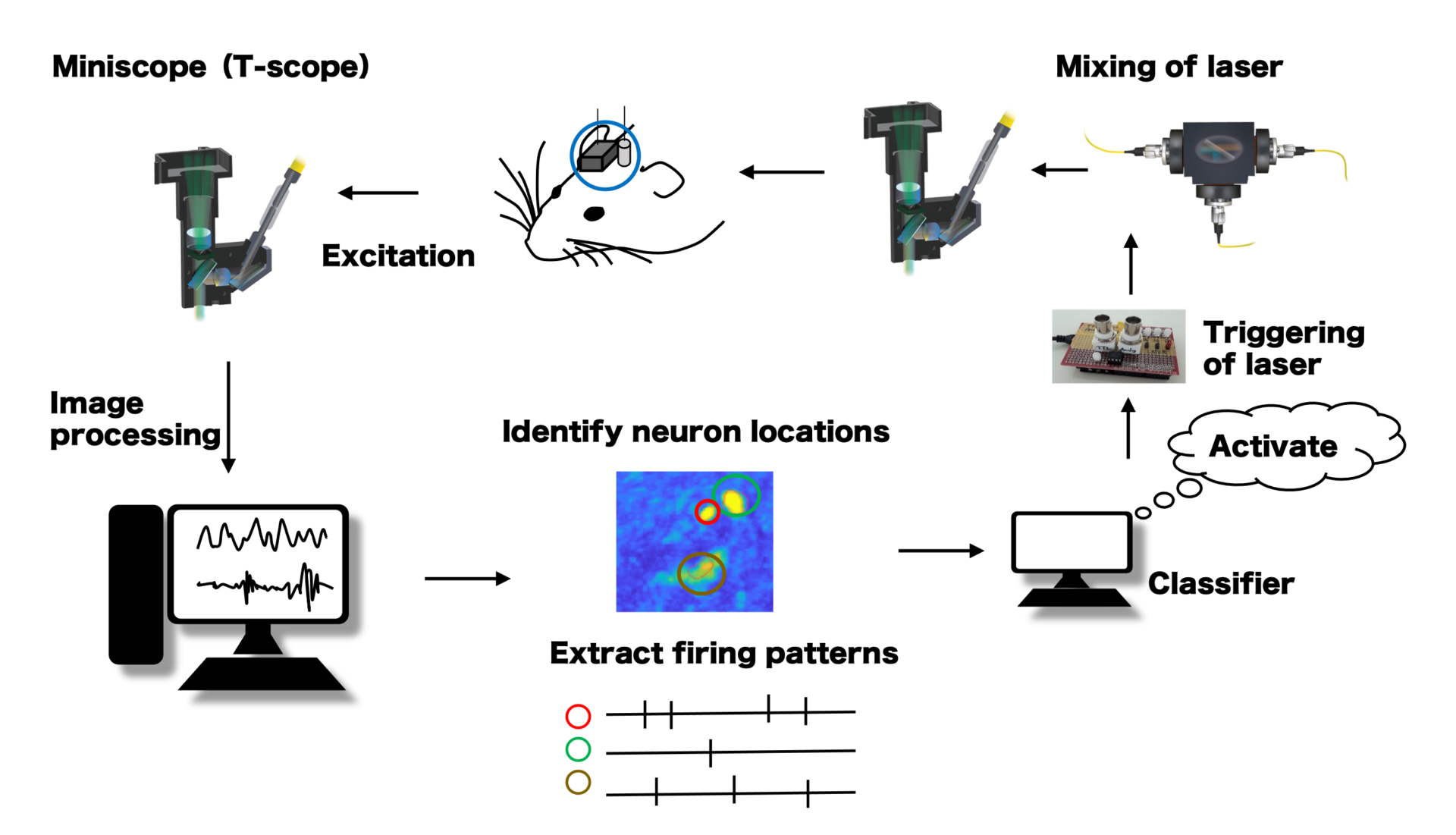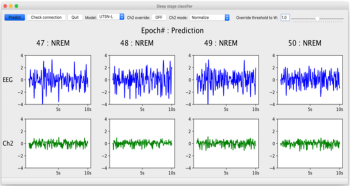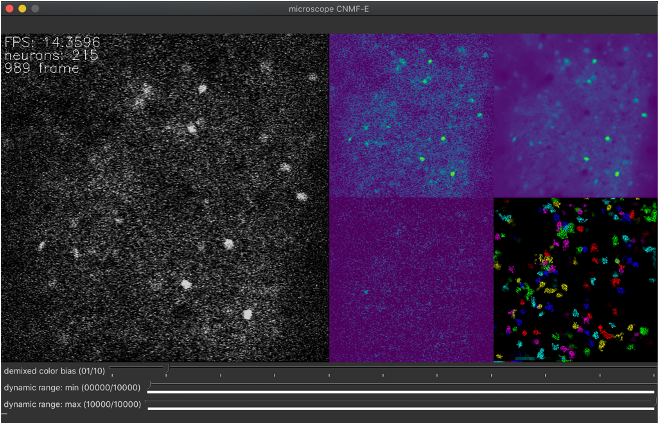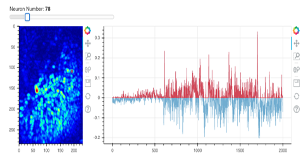Techniques of machine learning and robotics inspired by biological neural systems
Neuroscience research has inspired many technological developments in artificial intelligence and robotics, including neural networks and reinforcement learning. Our lab aims to understand the brain’s cognitive functions through advanced data analysis methods and provide new perspectives to artificial intelligence research.
Real-time closed-loop invasive brain experiments
We are building a real-time closed-loop system based on automatic sleep stage classification and optogenetics. These technologies make it possible to control the activity of only specific neuronal populations in the brain of a living animal. Specifically, the mouse brain is stimulated by a laser only during a particular stage of sleep, and a group of neurons is suppressed through light-sensitive ion channels. It lets us see what sleep activities are necessary for memory consolidation. Such findings may lead to new treatments for Alzheimer’s disease and REM sleep behavior disorder. (Joint research with Sakaguchi Lab, IIIS, Universitiy of Tsukuba).(Supported by G-7 Scholarship Foundation).

Automatic classification of sleep stages
Transitions in the global state of the brain during sleep have been observed not only in humans but also in animals. Our laboratory is developing software that classifies sleep stages in mice in real-time using only one-channel EEG. By combining this system with interventional manipulation such as optogenetics, it can be used to causally clarify the role of the global states of the brain. (Joint research with Sakaguchi Lab, IIIS, Universitiy of Tsukuba).

Ensemble and motif detection from calcium imaging
Ensembles and motifs, where multiple neurons act synchronously, have been attracting attention as basic units of information processing in the brain. Our laboratory is developing software that automatically discovers ensembles and motifs by image processing and pattern recognition on calcium imaging images recorded with a microscope from the brain of a living mouse.(Joint research with Sakaguchi Lab, IIIS, Universitiy of Tsukuba). (Supported by Japan Agency for Medical Research and Development (AMED) and Shimadzu Science Foundation).


Multi-neuron spike train kernels
It is widely believed that most information transfer between neurons is carried out by action potentials (spikes). For this reason, the analysis of spike trains is indispensable for understanding information representation in the brain. Various similarity and distance measures between spike trains have been defined, but using positive-definite kernels on spike trains has been proposed in recent years. It enables the application of various kernel methods, which are used in machine learning, to spike trains. Our laboratory studies kernels on multi-neuron (multi-channel) spike trains by extending kernels defined on single spike trains.

Neuronal population dynamics that underlie collaboration between the frontal lobe and the cerebellum
We are working on the control mechanism of body movement by the brain. In particular, we are analyzing how the collective dynamics of neurons are changed by deep brain stimulation to clarify what kind of coordination is performed between the frontal lobe and the cerebellum. (Joint research with Professor Yifat Prut, ELSC, Hebrew University of Jerusalem) (Supported by JSPS Promotion of Joint International Research).

